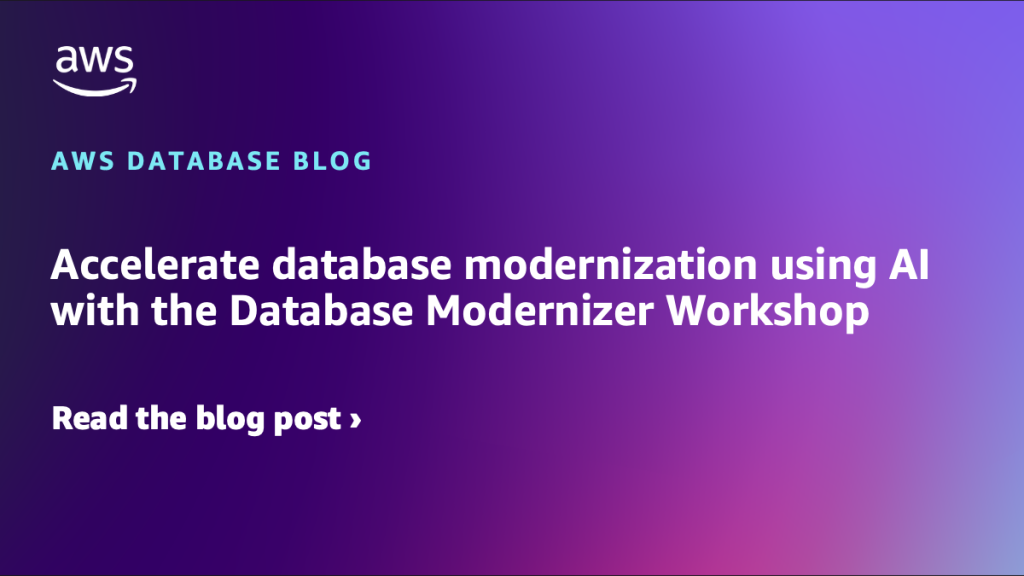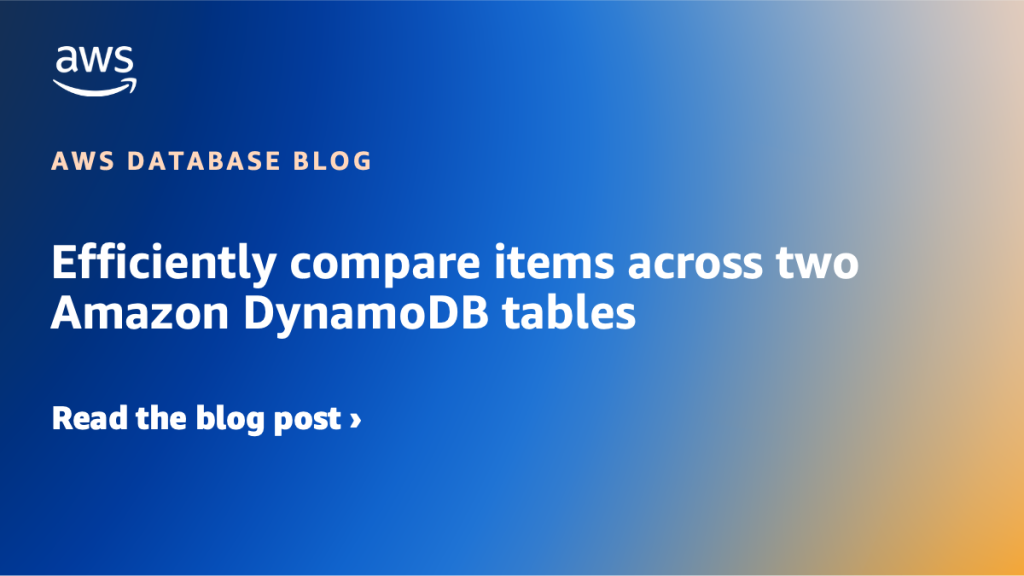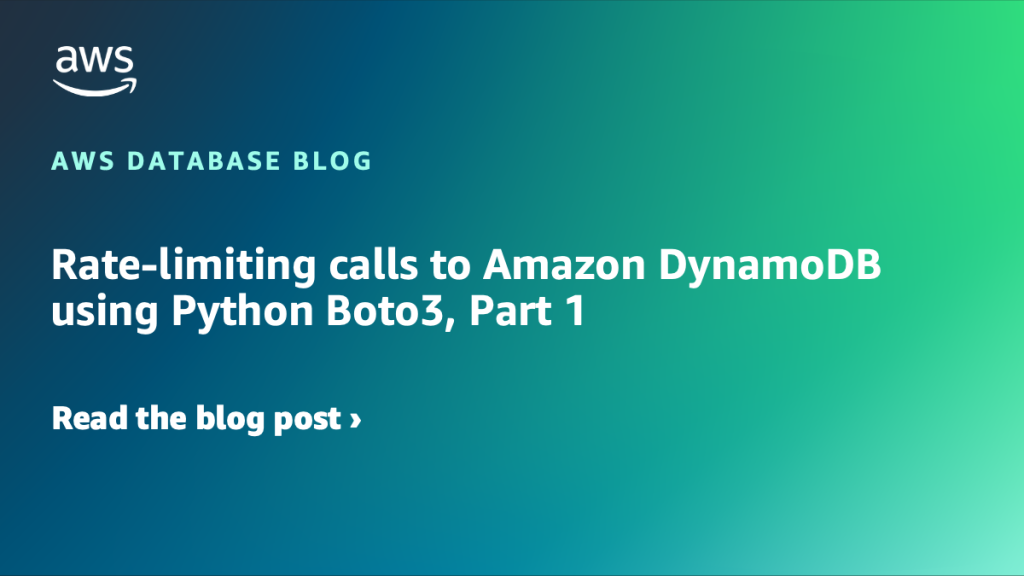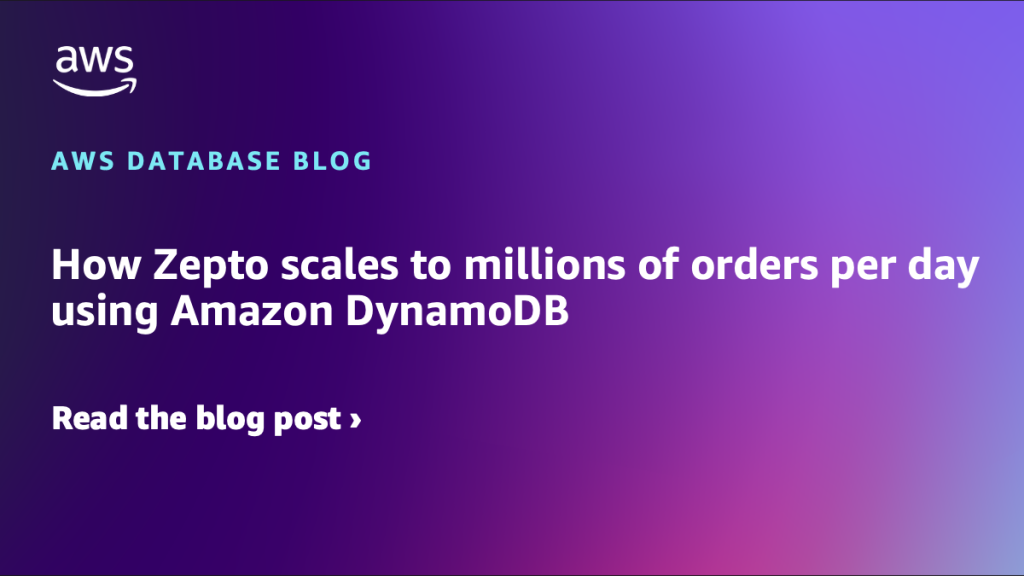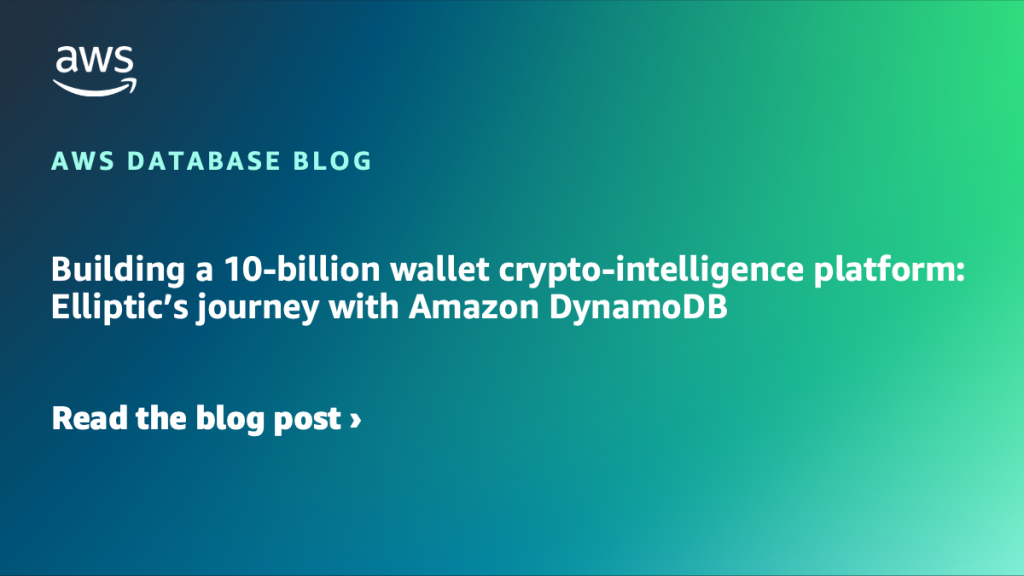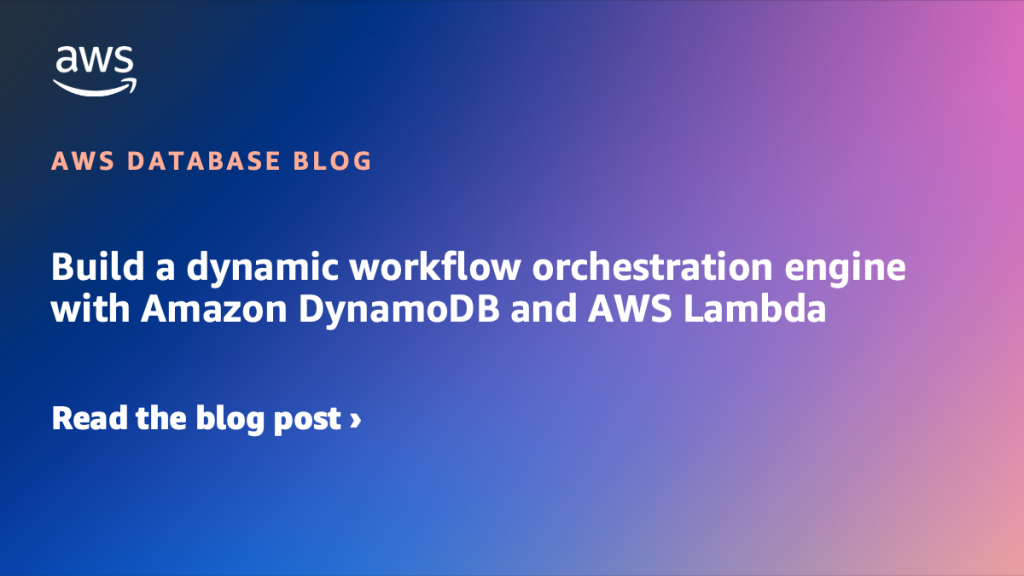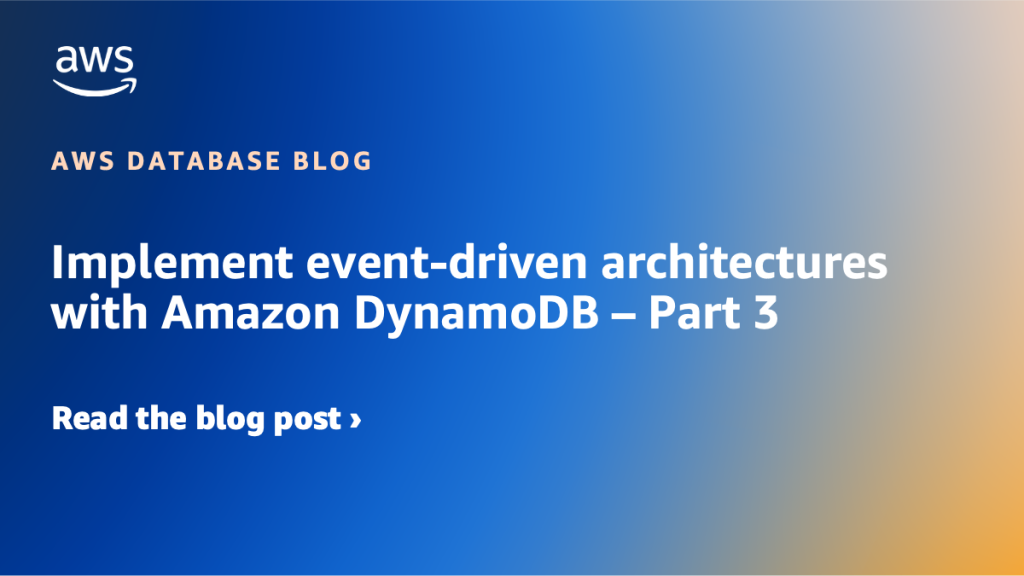AWS Database Blog
Category: Amazon DynamoDB
Multi-key support for Global Secondary Index in Amazon DynamoDB
Amazon DynamoDB has announced support for up to 8 attributes in composite keys for Global Secondary Indexes (GSIs). Now, you can specify up to four partition keys and four sort keys to identify items as part of a GSI, allowing you to query data at scale across multiple dimensions. In this post we show you how to design similar data models more efficiently using Global Secondary Indexes with the additional attribute support in composite keys and provide examples of DynamoDB data models with reduced complexity.
Accelerating data modeling accuracy with the Amazon DynamoDB Data Model Validation Tool
Today, we’re introducing the Amazon DynamoDB Data Model Validation Tool, a new component of the MCP server that closes the loop between generation, evaluation, and execution. The validation tool automatically tests generated data models against Amazon DynamoDB local, refining them iteratively until every access pattern behaves as intended.
Accelerate database modernization using AI with the Database Modernizer Workshop
In this post, we show how you can use the Database Modernizer workshop to accelerate your database modernization journey from MySQL to Amazon DynamoDB. Traditional approaches to migrating from relational databases to NoSQL solutions like DynamoDB can take several months, requiring extensive expertise in data modeling, application refactoring, and migration strategies. The Database Modernizer workshop, which can be scheduled by your account team as part of the Amazon DynamoDB Immersion Day program, uses AI to help you complete database modernization projects in days instead of months.
Efficiently compare items across two Amazon DynamoDB tables
In this post, we show an algorithm to efficiently compare two Amazon DynamoDB tables and find the differences between their items. We provide an example where two tables, each containing approximately half a billion items, are compared in less than 7 minutes, for less than $10.
Rate-limiting calls to Amazon DynamoDB using Python Boto3, Part 2: Distributed Coordination
Part 1 of this series showed how to rate-limit calls to Amazon DynamoDB by using Python Boto3 event hooks. In this post, I expand on the concept and show how to rate-limit calls in a distributed environment, where you want a maximum allowed rate across the full set of clients but can’t use direct client-to-client communication.
Rate-limiting calls to Amazon DynamoDB using Python Boto3, Part 1
In this post, I present a technique where a Python script making calls to Amazon DynamoDB can rate limit its consumption of read and write capacity units. The technique uses Boto3 event hooks to apply the rate limiting without having to modify the client code performing the read and write calls.
How Zepto scales to millions of orders per day using Amazon DynamoDB
In this post, we describe how Zepto transformed its data infrastructure from a centralized relational database to a distributed system for select use cases. We discuss the challenges encountered with Zepto’s original architecture to support the business scale, the shift towards using key-value storage for cases where eventual consistency was acceptable, and Zepto’s adoption of Amazon DynamoDB.
Building a 10-billion wallet crypto-intelligence platform: Elliptic’s journey with Amazon DynamoDB
In this post, we explore how Elliptic uses Amazon DynamoDB to build a crypto-intelligence platform that scales to over 10 billion wallets globally and supports real-time risk detection across the fast-evolving digital asset ecosystem. We discuss the data model design, indexing strategies, and operational setup that Elliptic uses to power real-time risk analysis and complex investigations at scale.
Build a dynamic workflow orchestration engine with Amazon DynamoDB and AWS Lambda
In this post, I show you how to build a serverless workflow orchestration engine that uses Amazon DynamoDB and AWS Lambda. The complete implementation is available in a GitHub repository, which includes two fully functional examples that you can deploy and run immediately to see the orchestration engine in action.
Implement event-driven architectures with Amazon DynamoDB – Part 3
In this three-part series, we explore approaches to implement enhanced event-driven patterns for DynamoDB-backed applications. Throughout this series, we’ve examined various strategies for managing data within DynamoDB. This post shifts the focus to an event-driven pattern that reliably schedules future downstream actions using EventBridge Scheduler.


